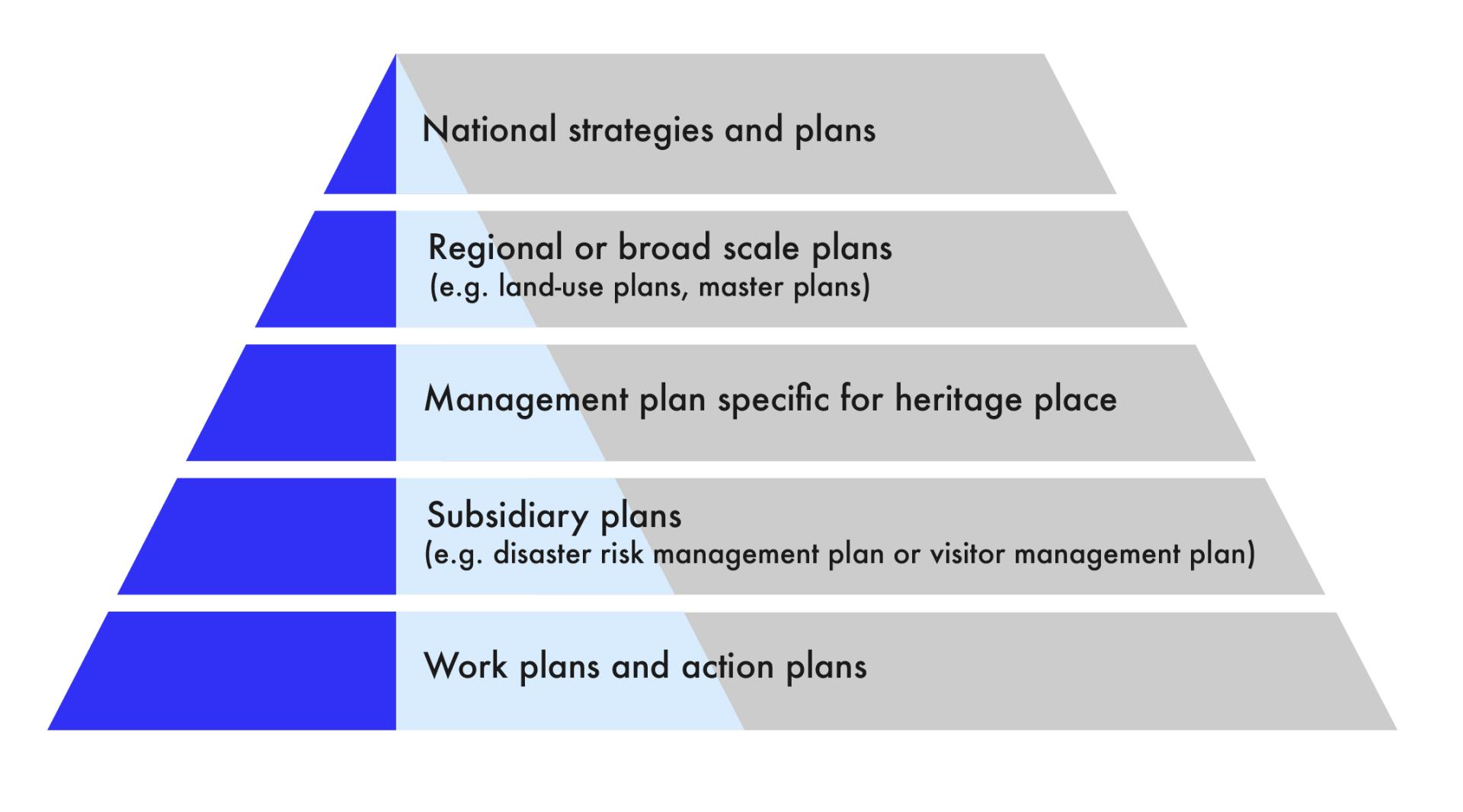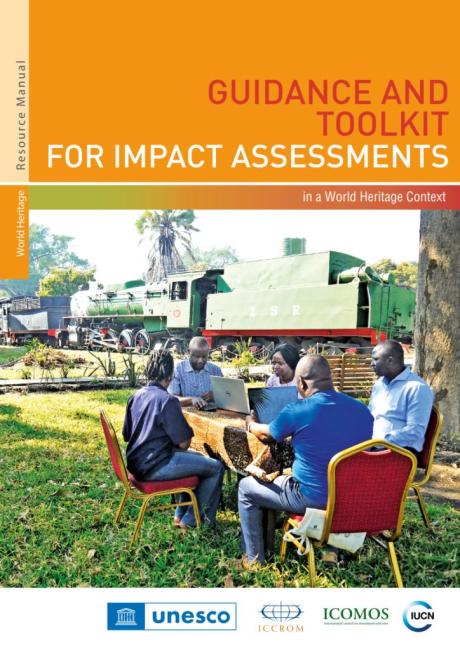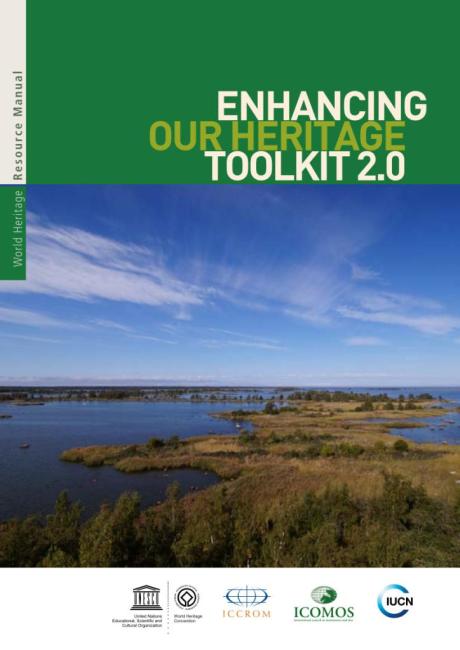Management planning processes
- An integrated approach to planning and management is essential to ensure maintenance of all aspects of the OUV and other heritage values and, in this way, to provide guidance on what needs to persist and what can change in World Heritage All inherited assets which people value for reasons beyond mere utility. Heritage is a broad concept and includes shared legacies from the natural environment, the creations of humans and the creations and interactions between humans and nature. It encompasses built, terrestrial, freshwater and marine environments, landscapes and seascapes, biodiversity, geodiversity, collections, cultural practices, knowledge, living experiences, etc. properties and other heritage places over time.
- Planning is required at various geographic scales and organizational levels and in thematic areas, all of which can affect the management of the heritage place, and it is important that heritage is considered within broader planning instruments because what happens around the heritage place can deeply influence its state of conservation.
- In many cases management plans are a legal requirement within national laws for natural and cultural heritage protection, and the specificities of World Heritage All inherited assets which people value for reasons beyond mere utility. Heritage is a broad concept and includes shared legacies from the natural environment, the creations of humans and the creations and interactions between humans and nature. It encompasses built, terrestrial, freshwater and marine environments, landscapes and seascapes, biodiversity, geodiversity, collections, cultural practices, knowledge, living experiences, etc. including the OUV and attributes need to be reflected in such plans.
- Any subsidiary plans will need to be carefully integrated within the management plan and aligned in terms of timeframes and implementation.
- Planning is a continuous process, a sequence of iterative steps, not a one-time event. It can include developing a management plan or other management instruments or actions to achieve management objectives. The cyclical participative process to develop various plans is as important as the plans themselves.
- Management planning needs both long-term thinking, so that heritage places are conserved for future generations, combined with an understanding of the practical steps that need to be taken in the short- and medium-term.
The Operational Guidelines state that an integrated approach to planning and management is essential to help guide the continuity and changes that take place at properties over time and to ensure maintenance of all aspects of their OUV. As such, management planning is for:
- directing management towards a desired future rather than simply reacting to problems as they arise;
- ensuring that management measures are based on a clear understanding of the present state of conservation of the property and that priority is placed on protecting the OUV;
- anticipating potential factors affecting the property as well as future problems and opportunities thereby providing guidance for managers to frame long-term strategic thinking, as well as day-today operations;
- strengthening collaboration and promoting joint action, particularly in properties with complex governance arrangements, where management responsibilities may be shared among several managers;
- transparently and continuously communicating how a property will be managed to retain its OUV:
- promoting continuity and maintaining commitments particularly in contexts with high political or staff turnover;
- promoting management effectiveness by collaboratively defining desired outcomes and subsequently monitoring whether they have been achieved or not.
Before starting to plan for a specific heritage place, it is helpful to consider the broader policy and planning context, in particular, the broader planning framework or hierarchy which can extend beyond the heritage place.
Planning is required at various geographic scales and organizational levels as well as in thematic areas, all of which can affect the management of the heritage place. At national, regional and local levels, spatial planning activities determine which areas of land and sea will be used for what purposes and outline strategies, rules and regulations for development. Management planning for heritage places should be seen as a part of these broader planning processes to ensure they are harmonized and not in conflict. As a result, several overlapping plans can coexist with a heritage management plan, as in the case of large areas such as natural protected areas, cultural landscapes or urban settlements.
Broader planning instruments often go beyond the specific heritage place both in terms of scale and scope, however, it is important that heritage is considered within such planning because what happens around the heritage place can deeply influence its state of conservation. By way of example, a regional government may develop a tourism strategy at regional scale with visitor projections and tourism infrastructure proposals that would seriously affect the heritage place.
Planning is a continuous process, not a one-time event. If heritage places are to be conserved for future generations, long-term thinking is needed, combined with an understanding of the practical steps that need to be taken in the short- and medium- term. To understand the difference and harness planning for long-, short- and medium-term timeframes, it is necessary to clarify:
- the overall management objectives for the whole management system, which broadly define what must be done to maintain the OUV of the
World Heritage property
A cultural, natural or mixed heritage place inscribed on the World Heritage List and therefore considered to be of OUV for humanity. The responsibility for nominating a property to the World Heritage List falls upon the State(s) Party(ies) where it is located. The World Heritage Committee decides whether a property should be inscribed on the World Heritage List, taking into account the technical recommendations of the Advisory Bodies following rigorous evaluation processes.
When used as a general term, World Heritage refers to all the natural, cultural and mixed properties inscribed on the World Heritage List. as well as other important heritage values, what management measures are necessary to conserve the attributes, how the property can contribute to sustainable development, and what benefits it aims to generate (see 3.5). - the strategies (or strategic directions or goals) to guide the change and continuity of the heritage place over a 20- or 30-year timeframe, in view of anticipated future challenges and opportunities. Long-term thinking is also important to deal with issues that need to be addressed over a long period of time, involving more than one management cycle. For instance, any possible regeneration of coral reefs after bleaching events usually requires many years. Similarly, introducing mitigation and adaptation measures to deal with the effects of climate change on a cultural landscape will also require longer-term and more strategic management responses.
- the desired outcomes, that is, what needs to be achieved over a specific management cycle, which is the subject of a management plan and its timeframe.
Being clear about the distinction between long- medium- and short-term steps, requires a clear understanding of:
- the present situation at the heritage place, particularly with regard to heritage values and attributes and the factors affecting them,
- whether the management instruments need to operate on a more strategic or operational level,
- what actions need to be taken and the outputs it will produce,
- what the timeframe will be for carrying out the actions,
- what resources are needed,
- who will be responsible for the implementation of the defined actions, and how monitoring and evaluation will be carried out.
Once the timeframe for planning has been decided, appropriate actions can be identified for the needs. For example a long-term action may include revising relevant legislation or setting up a collaborative management structure, whereas short-term actions may include adopting emergency shelters for heritage places impacted by a disaster or hiring temporary staff for priority interventions.
In addition, planning is dependent on other processes of the management system for the heritage place. For example, the state of conservation will need to be actively monitored in order to know what factors are affecting the heritage place, and these can only be properly identified if there is a good understanding of its values and attributes. Therefore, planning is not a linear series of steps towards the preparation of a management plan; it is an iterative and dynamic process with different feedback loops, where different elements interact and inform each other.

Figure 5.1 The relationship between policies and plans at different levels. Source: Adapted from Worboys et al.
Heritage All inherited assets which people value for reasons beyond mere utility. Heritage is a broad concept and includes shared legacies from the natural environment, the creations of humans and the creations and interactions between humans and nature. It encompasses built, terrestrial, freshwater and marine environments, landscapes and seascapes, biodiversity, geodiversity, collections, cultural practices, knowledge, living experiences, etc. practitioners undertake many other processes that also contribute to maintaining the values of a heritage place, such as providing tourism and visitor services, mitigating risks, reducing impacts from disasters, carrying out research, fostering the engagement of local communities or facilitating educational activities. Many heritage places, therefore, have other thematic or subsidiary plans that address these issues, e.g. DRM plan (see 5.6), tourism strategy and heritage interpretation plan (see 5.9), etc. It is very important that such plans sit under the umbrella of the heritage place’s main management plan.
Any subsidiary or complementary plans will need to be carefully integrated within the management plan with the fundamental objectives of sustaining the OUV and other heritage values and aligning them in terms of timeframes and implementation. If they have diverging timelines, there is a risk that the plans include more actions than can be delivered with existing human capacity and financial resources.
There is also a risk that the timing of their implementation is not harmonized, preventing certain actions from starting until others are concluded and achieving their desired outcomes. In order to avoid these problems, it is essential that there is strong coordination between managers and planning teams that link between the complementary planning processes and ensure they are mutually supportive.
Therefore, it is of great importance who is involved in planning, what knowledge and information is used, what procedures are followed, what criteria are used to decide what is to be achieved, the best course of action to get there, and who has the power to decide on all these aspects. All this is dependent on many things, such as:
- the governance arrangements for the heritage place (see 4.1, 4.2, 4.3, 4.4);
- how effective other elements of the management system are (see EOH Toolkit 2.0);
- what approach is taken towards preparing the management plan (e.g. if developed directly by managers, government agencies or external consultants - see 5.2);
- the resources available (if there is a need to look for extraordinary funding to develop the plan - see 5.4);
- the purpose of the plan within the larger planning framework (see 3.1, 3.2, 3.3, 3.4, 5.1, and EOH Toolkit 2.0, Tool 6).
To link all processes and timeframes more effectively it can be useful if the outputs of the management planning can envisage:
- a long-term strategy or strategic plan: a short document to tackle existing and anticipated management challenges that require a long-term perspective as well as sustained efforts over a long period of time (perhaps over 20-30 years);
- a management plan: a slightly longer document that identifies desired management outcomes for a shorter period of time (perhaps 5-10 years). In addition, for serial and transboundary World Heritage All inherited assets which people value for reasons beyond mere utility. Heritage is a broad concept and includes shared legacies from the natural environment, the creations of humans and the creations and interactions between humans and nature. It encompasses built, terrestrial, freshwater and marine environments, landscapes and seascapes, biodiversity, geodiversity, collections, cultural practices, knowledge, living experiences, etc. properties, it may be necessary to have a management planning framework to guide management across the different component parts of the property;
- an operational or work plan: a much more detailed but practical document that specifies how to implement the management plan in detail. It lists exactly who will do what, in what way, and with what funding over a 1-2 year period. When a management plan itself covers a short period of time (3-5 years), it may include a programme of actions (sometimes also called action plan), directly showing how the plan is to be implemented;
- subsidiary plans: in some cases, particular attention needs paying to specific areas of activity (from DRM to heritage interpretation) and in these cases additional plans might be written. However, they must all be well coordinated with the content of the main management plan.
The managers of each heritage place will need to decide which of these instruments are helpful in supporting management and conservation efforts.
Distinguishing between management objectives and management outcomes is important. The examples given here are for highlighting the differences, where the objectives and desired outcomes do not directly correspond to each other.
Examples of management objectives
- To preserve the traditional building techniques associated with wooden architecture.
- To protect the mangroves along the coastline of the property.
- To maintain the historic green spaces within the city centre.
- To maintain the townscape character of the traditional human settlement.
- To maintain the wine-making industry as the key economic activity within the cultural landscape.
- To preserve the pilgrimage routes to the sacred places.
- To maintain the habitat necessary to the survival of the endangered species.
Examples of desired management outcomes
- Number of skilled crafts people increased by at least 20% by 2026.
- Mangroves restored back to 60% of original extent by 2030.
- Historic garden within northern area of the historic urban centre fully rehabilitated by 2027.
- Overfishing of a particular species (state which one) significantly reduced by 2025 by working in collaboration with fishing communities.
- Interpretation of the property enhanced by working with rights-holders to improve the quality of guided visits within the property.
- Gazettement of the community-conserved areas within the buffer zone of the property completed.
- Visitor management enhanced through the construction of a new visitor centre.
- Have management objectives for the
World Heritage property
A cultural, natural or mixed heritage place inscribed on the World Heritage List and therefore considered to be of OUV for humanity. The responsibility for nominating a property to the World Heritage List falls upon the State(s) Party(ies) where it is located. The World Heritage Committee decides whether a property should be inscribed on the World Heritage List, taking into account the technical recommendations of the Advisory Bodies following rigorous evaluation processes.
When used as a general term, World Heritage refers to all the natural, cultural and mixed properties inscribed on the World Heritage List. or heritage place been identified? - Are the objectives clearly linked to the values and attributes of the property?
- Are the objectives specific enough to guide the management system for the property?
- How many different broad scale plans affect your heritage place? Do they take heritage into consideration?
- Is it clear which is the main planning instrument that guides the management of the property?
- Is the management plan well integrated with those other planning instruments that influence the management of the property (including plans with a broad territorial scope, such as a land-use plan, regional tourism plan or a master plan)?
- Is the overall planning framework adequate to effectively manage the property?
- Is the planning framework adequate to effectively manage any existing buffer zone(s)?
- Who is involved in the planning process for the heritage place?
- What kind of subsidiary plans does your heritage place have?
- What is the timeframe of the management cycle at your heritage place? Is it connected with that of broader scale plans and especially with the timeframe of subsidiary plans?
- Is there sufficient time to develop and approve a new plan before the time-frame of the previous plan ends?
- UNESCO, ICCROM, ICOMOS, IUCN (2023). Tool 6 Management Planning Framework and Tool 8 Decision making processes in Enhancing Our Heritage All inherited assets which people value for reasons beyond mere utility. Heritage is a broad concept and includes shared legacies from the natural environment, the creations of humans and the creations and interactions between humans and nature. It encompasses built, terrestrial, freshwater and marine environments, landscapes and seascapes, biodiversity, geodiversity, collections, cultural practices, knowledge, living experiences, etc. Toolkit 2.0. Paris, UNESCO.
- Spoelder, P., Lockwood, M., Cowell, S., Gregerson, P and Henchman, A. (2015) ‘Planning’, in G. L. Worboys, M. Lockwood, A. Kothari, S. Feary and I. Pulsford (eds) Protected Area Governance and Management, pp. 381–412. Canberra (Australia), ANU Press.
- UNESCO, ICCROM, ICOMOS, IUCN (2012). Section 3.2 on Management Planning in the manual Managing Natural World Heritage All inherited assets which people value for reasons beyond mere utility. Heritage is a broad concept and includes shared legacies from the natural environment, the creations of humans and the creations and interactions between humans and nature. It encompasses built, terrestrial, freshwater and marine environments, landscapes and seascapes, biodiversity, geodiversity, collections, cultural practices, knowledge, living experiences, etc. , pp. 39-44. Paris, UNESCO.
- UNESCO, ICCROM, ICOMOS, IUCN (2012). Section 4.3 on The three processes of a heritage management system in the manual Managing Cultural World Heritage All inherited assets which people value for reasons beyond mere utility. Heritage is a broad concept and includes shared legacies from the natural environment, the creations of humans and the creations and interactions between humans and nature. It encompasses built, terrestrial, freshwater and marine environments, landscapes and seascapes, biodiversity, geodiversity, collections, cultural practices, knowledge, living experiences, etc. , pp. 82-102. Paris, UNESCO.



